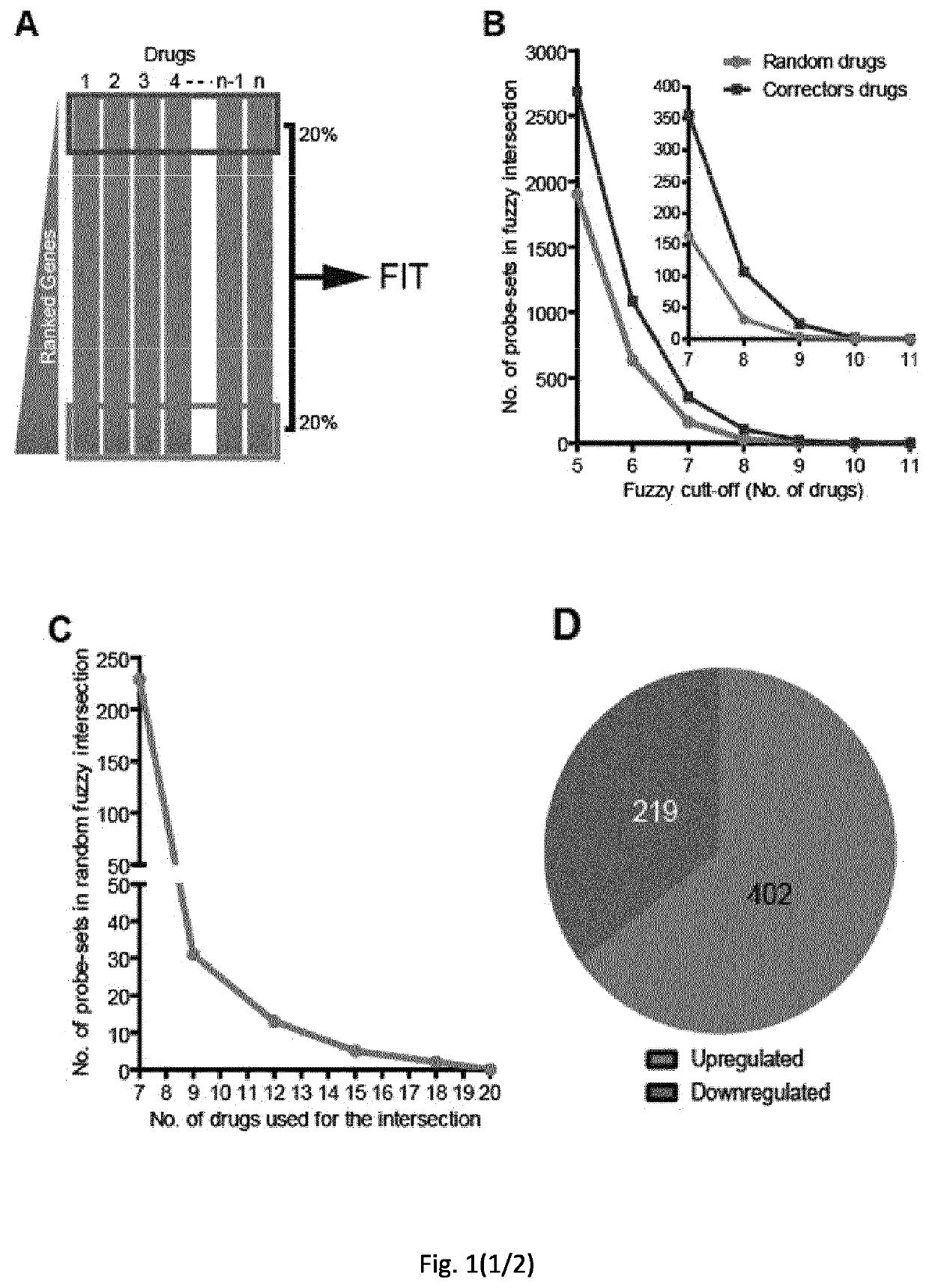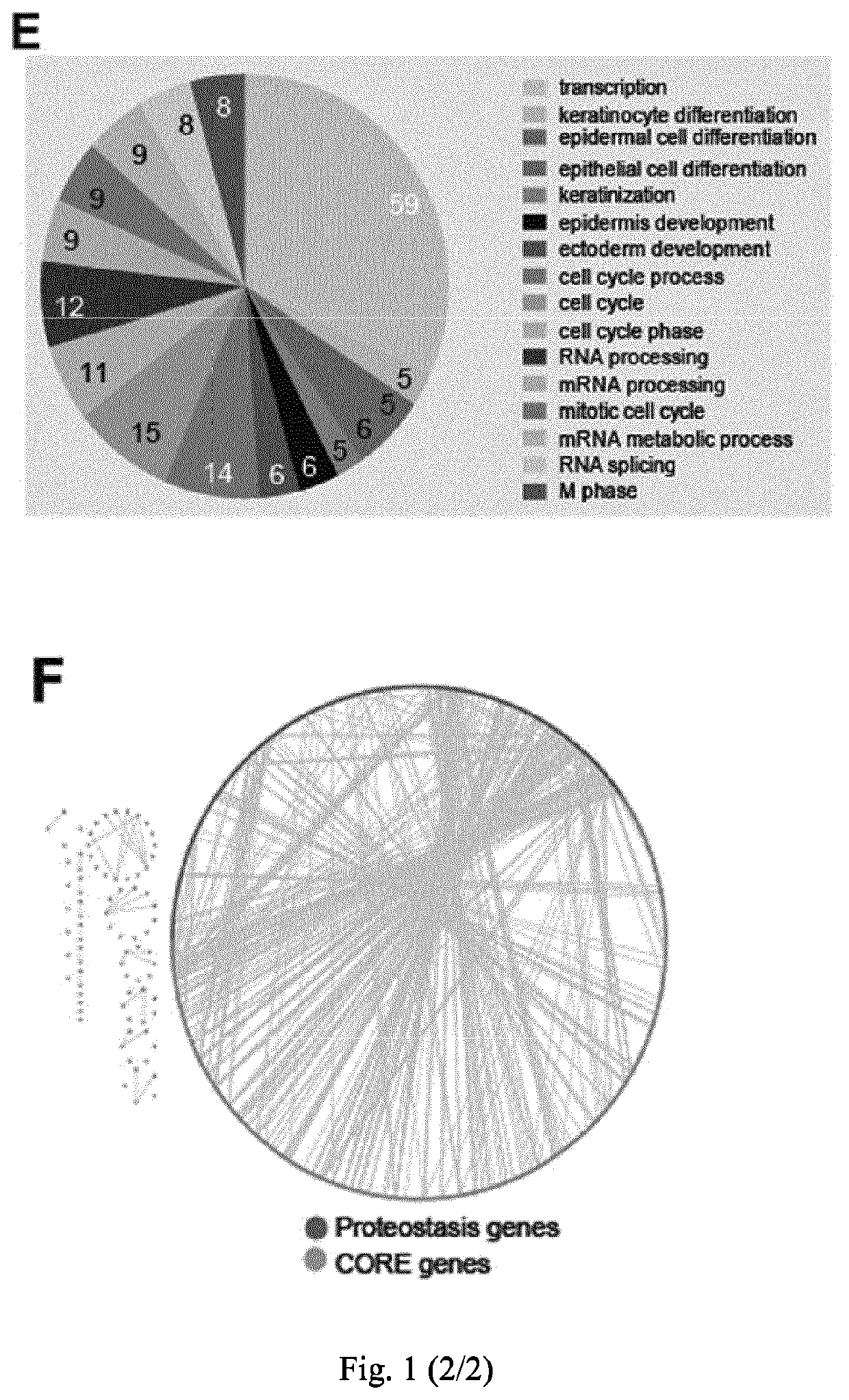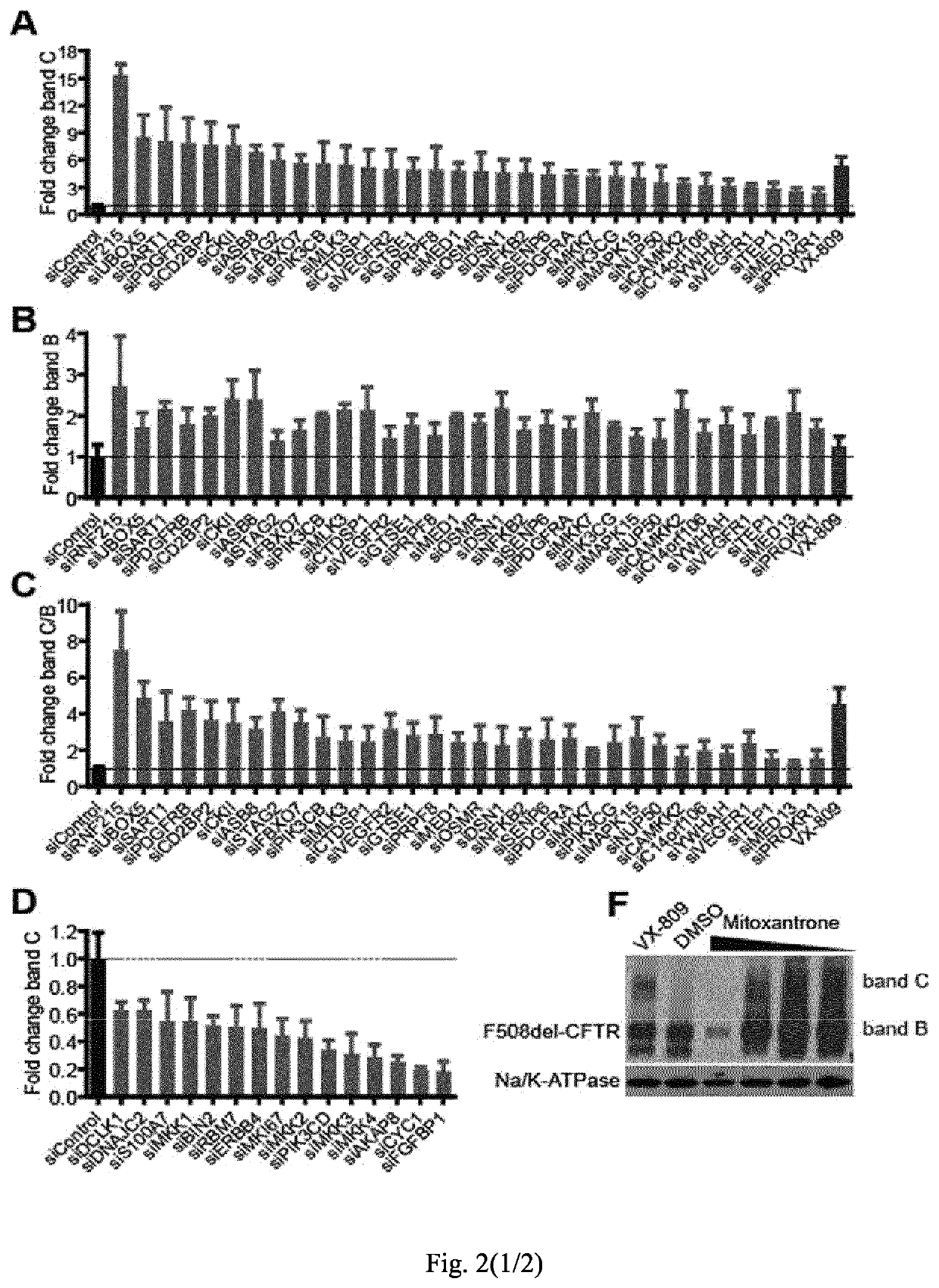Kinase and ubiquitin ligase inhibitors and uses thereof
a kinase and ubiquitin ligase technology, applied in the field of kinase and ubiquitin ligase inhibitors, can solve the problems of loss of function of mutant proteins, systematic exploration of signaling pathways that regulate the initial stages of proteostasis viz. the lack of folding and degradation of proteins, etc., to achieve efficient control of proteostasis, enhance transport, and enhance correction
- Summary
- Abstract
- Description
- Claims
- Application Information
AI Technical Summary
Benefits of technology
Problems solved by technology
Method used
Image
Examples
examples
[0072]Materials and Methods
[0073]Cell Culture, Antibodies, Plasmids and Transfection
[0074]CFBE cells stably expressing wild type CFTR or F508del-CFTR (Bebok et al. 2005) and stably expressing halide sensitive YFP (Pedemonte et al. 2005) and HeLa cells stably expressing HA-tagged F508del-CFTR (Okiyoneda et al. 2010) were used. CFBE cells were cultured in Minimal Essential Medium supplemented with 10% foetal bovine serum, non-essential amino acids, glutamine, penicillin / streptomycin and 2 μg / ml puromycin. This media additionally supplemented with 50 μg / ml G418 was used for the CFBE-YFP cells. HeLa cells were cultured in Dulbecco's modified Eagle's medium (DMEM) supplemented with 10% foetal bovine serum, glutamine, penicillin / streptomycin and 1 μg / ml puromycin. The antibodies used were: anti-phospho-c-jun (Cell Signaling Technology), monoclonal anti-HA, anti-actin and anti-tubulin (Sigma), rat anti-CFTR (3G11; CFTR Folding Consortium), mouse monoclonal anti-CFTR (M3A7), HRP-conjugated ...
PUM
| Property | Measurement | Unit |
|---|---|---|
| Volume | aaaaa | aaaaa |
| Volume | aaaaa | aaaaa |
| Volume | aaaaa | aaaaa |
Abstract
Description
Claims
Application Information
 Login to View More
Login to View More - R&D
- Intellectual Property
- Life Sciences
- Materials
- Tech Scout
- Unparalleled Data Quality
- Higher Quality Content
- 60% Fewer Hallucinations
Browse by: Latest US Patents, China's latest patents, Technical Efficacy Thesaurus, Application Domain, Technology Topic, Popular Technical Reports.
© 2025 PatSnap. All rights reserved.Legal|Privacy policy|Modern Slavery Act Transparency Statement|Sitemap|About US| Contact US: help@patsnap.com



